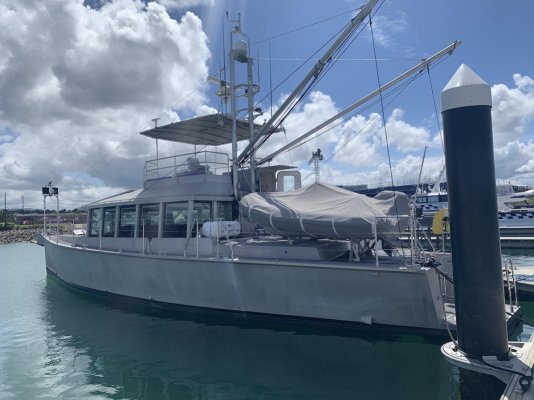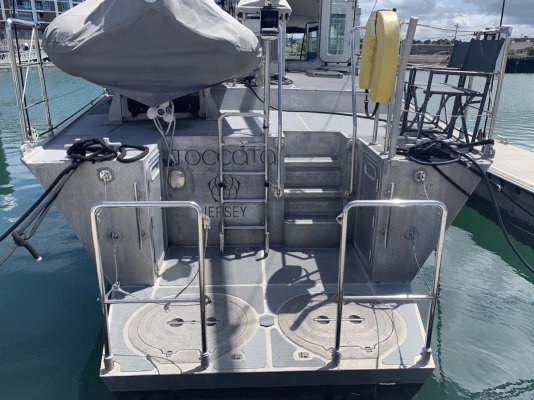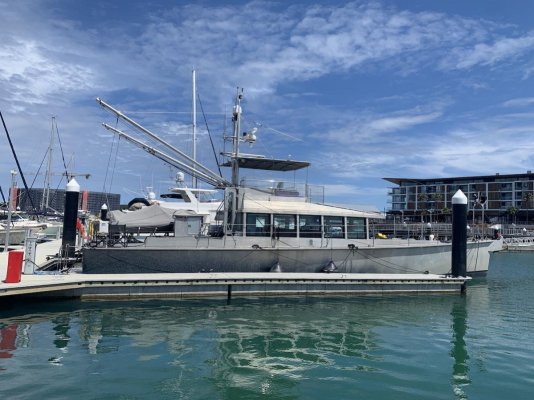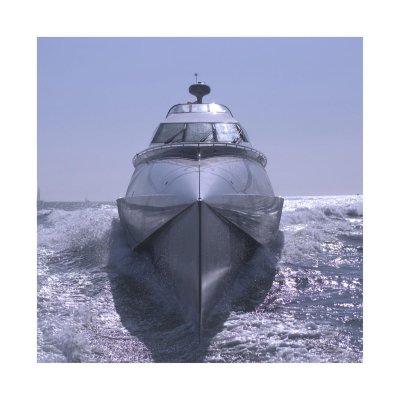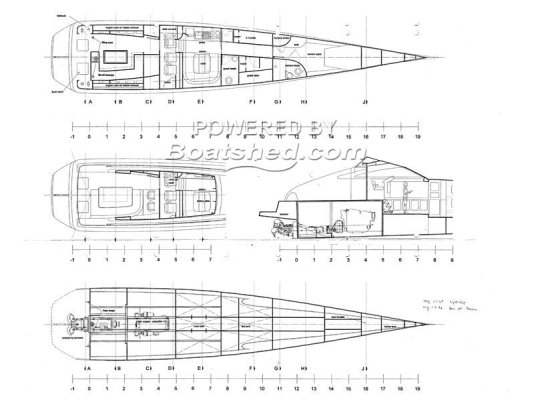Hi Twistedtree - i tend to agree with everything you’ve said about FPBs but I wondered what you think about long-range powercats. These are fast and efficient but also spacious, light and optimised for spending a lot of time at anchor. They have simple/quick tender deployment, stability at anchor, no need for active stabilisation and plenty of surface area for solar panels. How would you compare a 60ft powercat with 3000nm range with a conventional trawler (e.g. Nordhavn) for long term international cruising?
I was waiting for TT to weigh in here before making a comment myself. I view his response as rational.
The short answer is that I think world cruising capability comes in at least these three forms (FPB, long range ocean cat, and the stabilized heavy deep footed displacement monohull). I think the differences from there may get to be pretty personal and not such that you can say with any authority that one of these is better.
There is one of these FPB 64s in my marina in La Paz at the moment and she takes my breath away. I actually love the aesthetic from a distance and her capability to cruise far, fast, and safely with serious redundancies is beyond reproach.
I would not own one for the reasons that TT expressed but I admire them deeply.
My cat can cover more miles at higher speed, and on less fuel in similar comfort and safety. And, when I get to my destination, she is much more livable and fun.
Similarly, there is a good case to be made for the heavy slow boats. I own one of these as well and like it though it is not on the order of an N68. I love the aesthetic of the 62 based on the same principles but much more pleasing to my personal eye.
While I own both for now, the day is coming when I will choose.
I will not choose the slow heavy boat for reasons that are likely personal.
There is too much of this water world that I would like to see and lack the time to see it at that speed. Not needing to time any tidal rapids that I can imagine transiting is quite appealing. I have 24 knots available. I actually think more bar conditions may be accessible in the cat. And, while the truth is that fuel use really doesn't matter that much unless range is as issue, the cat is more efficient than either the FPB or the monohull and has the range of the FPB. If having the helm station dark while others aboard want light is your most important criteria, well then you better buy a pilot house. This matters none to me 99% of the time that I am cruising/anchoring so it will not make the list of criteria of significance.
And, let's just admit that I am cheap. I was able to access this kind of capability in the cat that I own for 1/4 the initial cost of the other two on the same day. WIN. I give up total interior space for sure. The cat is really a 52 foot boat that sits on 130 feet of hull. There is primarily two of us, so this is way more than adequate. Guest quarters are spartan to put it kindly. There is enough storage to go off grid for literally years. For the record, I have two stand-up engine rooms.
Everything is a compromise. The well proven world cruising cat is mine.


